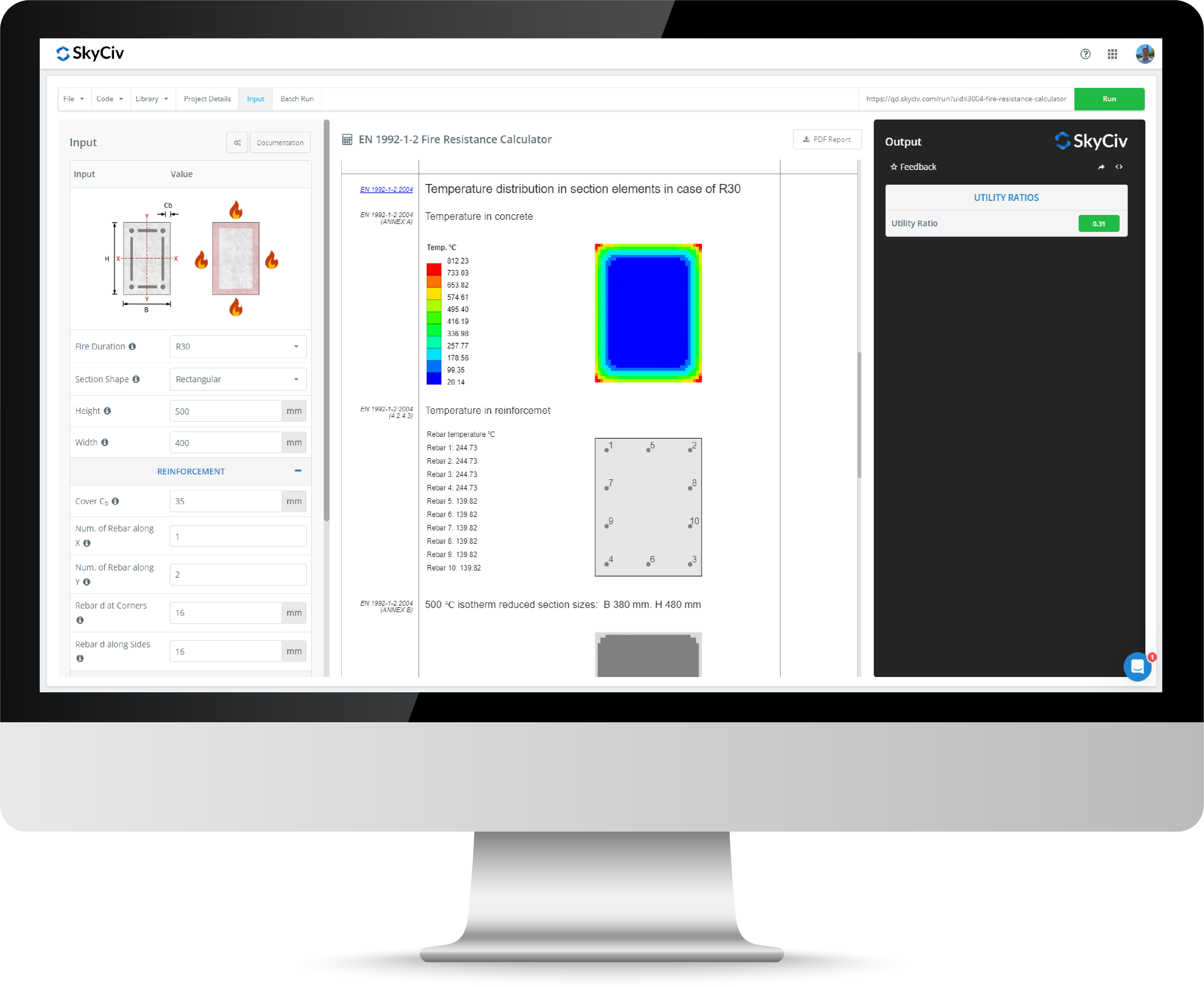SkyCiv Shear Lug Calculator
The SkyCiv Shear Lug Calculator allows shear lugs to be checked according to the Indian IS 800-2007 design codes. The calculator supports any fabricated section made up of plates including single plates, two plates welded to each other in the form of a “+” sign, and three plates welded to each other to form an “I” shape.
The calculator evaluates the capacity of a given shear lug to resist the horizontal in both directions and also checks the embedment length of the lug. This horizontal shear may be due to the worst effect of lateral loads which needs to be safely transferred to the foundations with the help of a shear key between the base plate and the foundation.
About the Shear Lug Calculator
What is a Shear Lug?
A shear lug works in a very similar fashion to how shear keys are used in a retaining wall. Typically, a shear lug is usually made up of a steel section that is attached to the steel baseplate of a steel column. It is designed to help resist and transfer the horizontal shear force that develops at the base of the column due to lateral loads. In the case where the column experiences high lateral loads, anchor bolts alone are insufficient to transfer the horizontal loads in the form of a reaction at the base of the column due to the small cross-sectional area of anchor bolts. Therefore if the section is welded to the bottom of the base plate as a shear lug it will take the shear and transfer it to the surrounding concrete/grout and ultimately to the foundation.
What makes up a Shear Lug?
Shear lugs are made up of rectangular plates (or alternatively plates made from other cross-sections such as I or star sections). The orientation of the shear lug is determined by the direction of the horizontal reactions that are experienced at the base of the column. If a steel base plate is used then the shear lug is usually welded to the bottom side of the base plate. The base plate with the attached shear lug is then embedded into either concrete or grout to transfer forces between the base plate and the below sub-structure.
What Structures are Shear Lugs used in?
Shear lugs are often found in structures that experience large horizontal reactions at their base. These large horizontal reactions are generally due to heavy lateral loads caused by wind or seismic loads. Examples of structures include tall steel buildings (moment-resisting frames/braced frames), heavy equipment supporting structures, and pipe racks. Shear lugs are used in structures that experience large amounts of horizontal reactions at the base due to heavy lateral loads due to wind/seismic loads.
Considerations when Designing a Shear Lug
The following checks are essential in the analysis and design of a shear lug:
- Checks for the welding between the lug and base plate (shear).
- Check that the shear lug suits the transfer between horizontal reaction from the base plate to the surrounding concrete (tension and shear)
- Checks for sufficient embedment depth of the lug into the grout/concrete pedestal (tension)
- Check for the bond between the shear lug and the surrounding grout.
Shear Lug Calculator FAQs
What design code does the shear lug calculator use?
The SkyCiv shear lug calculator is based on the Indian IS 800-2007 standard.
What assumptions and limitations are in the shear lug calculator?
The above shear lug calculator only checks for the following:
- Concrete Bearing.
- Shear Key Section Flexure & Shear Check about the major and minor axis.
- Shear Key to Base Plate Fillet Weld.
- The calculator only supports metric units.
In what scenarios can the shear lug calculator be used?
The SkyCiv shear lug calculator can be used when steel column bases are subjected to large amounts of horizontal shear forces (high rise/equipment support structures), then the force transfer can not be transferred with just anchor bolts. In fact, anchor bolts do not play a considerable role in transferring these loads. In this case, a shear key helps to transfer these loads safely to the RC pedestal.



